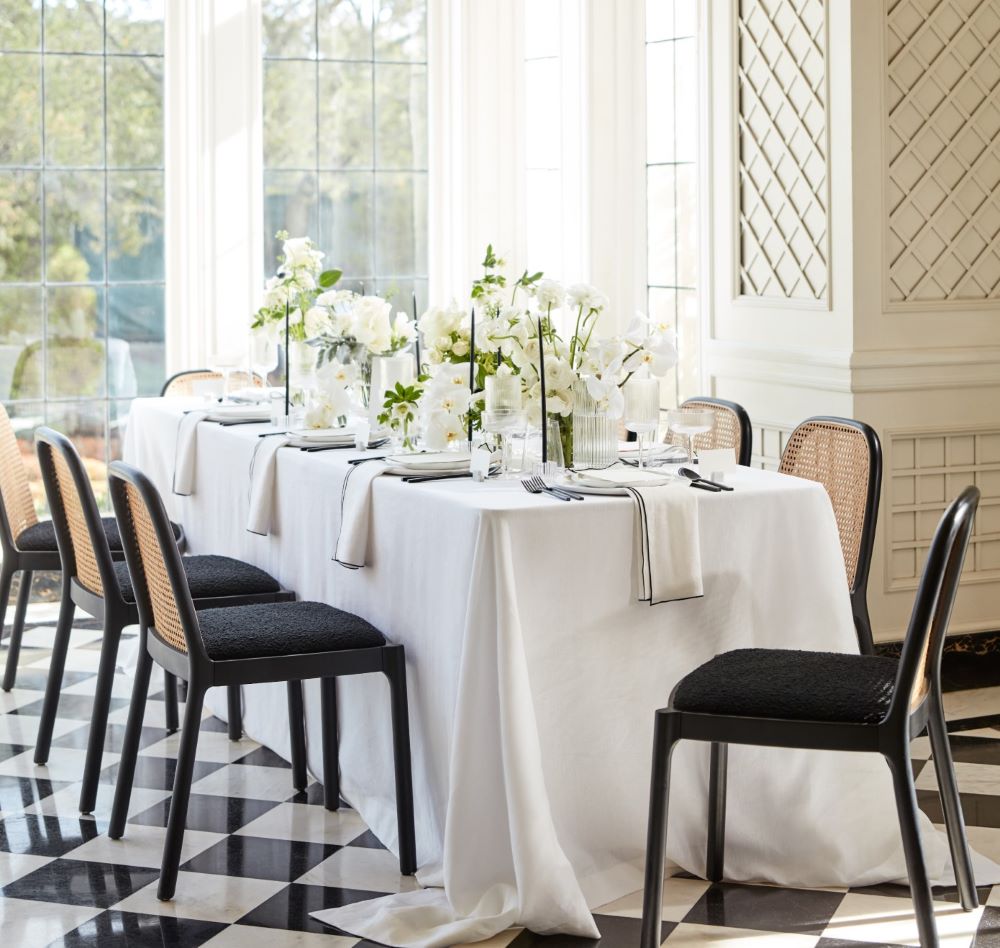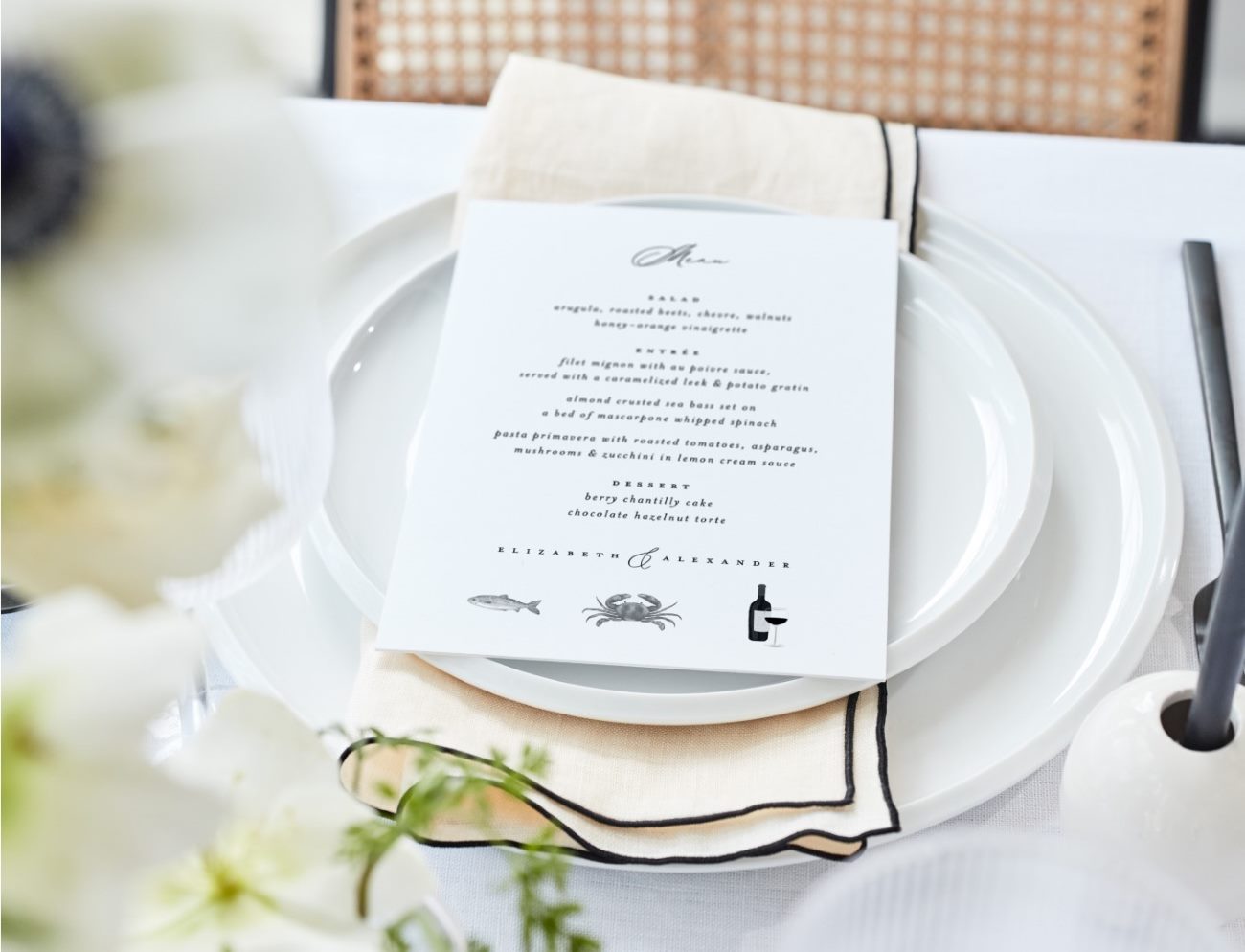Ever wondered why a bride carries a bouquet down the aisle or why wedding cakes are tiered? Weddings are full of traditions, but many couples don’t know the origins and stories behind them. Part of personalizing your wedding is deciding which traditions you love, which ones you'd rather skip—and which ones you want to remake into something uniquely your own. (Plus, learning about these traditions can be a fun distraction from wedding planning if it starts to feel a little overwhelming—which, totally normal!)
1. THE PHRASE "SOMETHING OLD, SOMETHING NEW, SOMETHING BORROWED, SOMETHING BLUE"
This saying is derived from an Old English rhyme that lists the four good-luck objects a bride should have on her wedding day. "Something old" represents the couples' past lives, while "something new" symbolizes their happy future. "Something borrowed" typically means incorporating an item belonging to someone who is happily married in the hopes that some of their good fortune rubs off. And the color blue? It represents fidelity and love.
2. CARRYING A BRIDAL BOUQUET
These days, brides are carrying peonies and roses down the aisle, but back in ancient Greece and Rome, it was all about aromatics. During that time, brides would hold bouquets of garlic, dill, and other herbs and spices to ward off evil spirits. Carrying a favorite flower variety is a tradition that became popular in 1840, when Britain’s Queen Victoria married Prince Albert and carried a bouquet of snowdrops, his favorite flower. (Looking for floral inspiration? Check out our detailed wedding flower guide, written by a professional florist.)
3. WEARING MATCHING BRIDESMAID DRESSES
In Roman times, people believed evil spirits would attend the wedding in an attempt to curse the bride and groom. To confuse the spirits, bridesmaids acted as decoys and dressed identically to the bride. The idea was that the spirits would be unsure which woman was the bride—which would lead them to leave her alone and allow the couple to wed.
4. WEARING A WEDDING VEIL
This tradition also dates back to ancient Rome, where a bride would walk down the aisle wearing a veil over her face to disguise herself from those pesky evil spirits looking to ruin her wedding day. These days, wedding veils come in many styles and lengths: short blusher veils, medium-length fingertip veils, and dramatic cathedral veils.
5. WEARING YOUR RING ON YOUR "RING FINGER"
The Romans believed that the fourth finger on the left hand was connected directly to the heart by a vein called “the vein of love.” Because of this hand-heart connection, this finger has been adopted through the ages as the wedding ring finger.
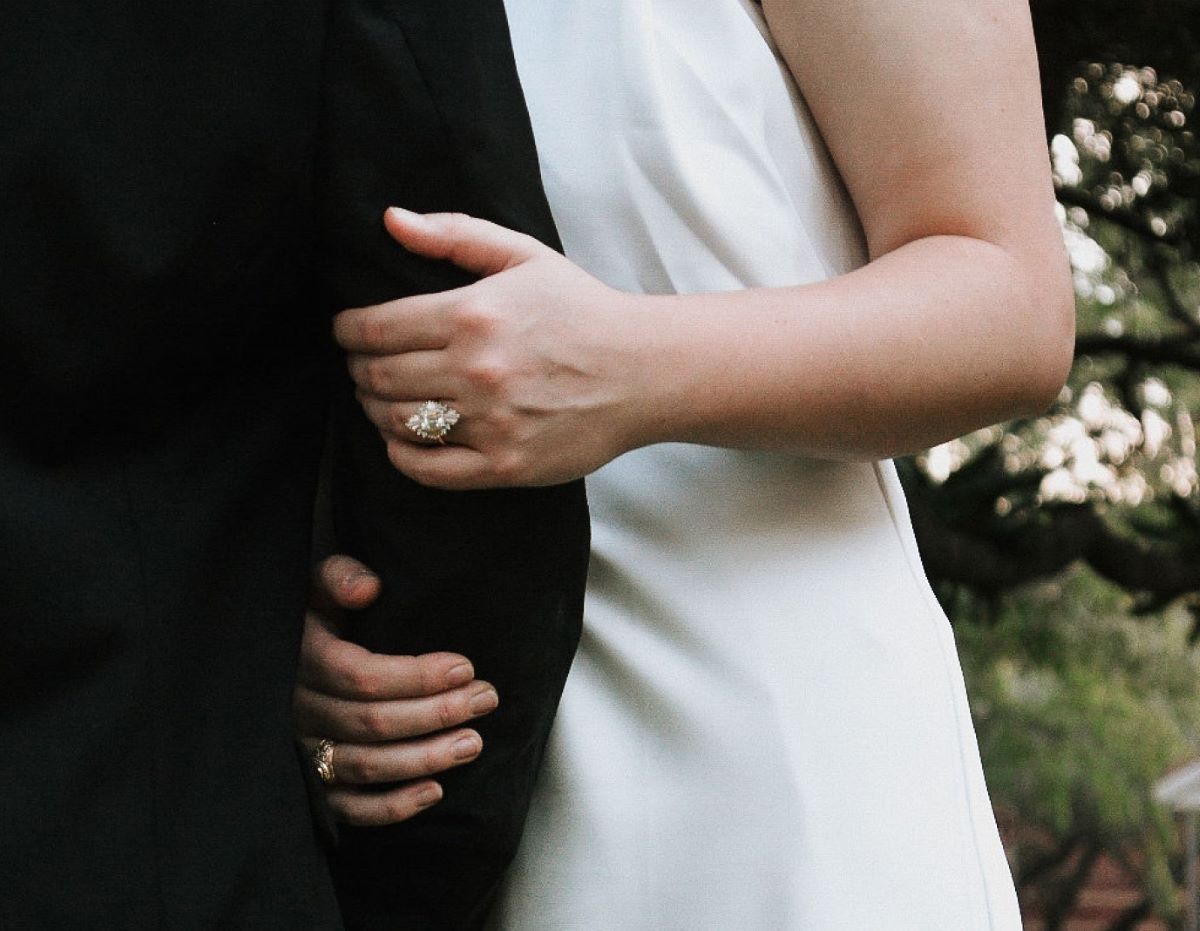
6. MAILING GUESTS PRINTED WEDDING INVITATIONS
Prior to 1642, many weddings were announced in the newspaper (before that, they were typically announced by the town crier!). Then metal-plate engraving was invented, and members of the middle class began sending out engraved invitations. With the Industrial Revolution, invitations became more widespread—and were sent in double envelopes to protect them from damage en route. (To explore our envelope colors—plus our paper options, foil colors, and more—request a wedding invitation sample kit.)
7. THE PHRASE "THE HONOUR OF YOUR PRESENCE”
Have you ever received a wedding invitation with "honour," spelled out British-style with the “u”? This formal spelling style lets guests know that the wedding ceremony will be held in a place of worship, like a church.
8. "GIVING" THE BRIDE AWAY
This wedding ceremony tradition dates back to a time of arranged marriages, where the “giving away” of the bride represented a transfer of ownership. Back then, young women were used as collateral and were given away in exchange for a “bride price” or dowry. Today, this tradition has shifted away from its antiquated origins and is now an opportunity for a father to escort his daughter down the aisle to meet the person she is about to marry.
9. THE PHRASE "TYING THE KNOT"
In Celtic, Hindu, and many other cultures, the bride’s and groom’s hands are tied together to symbolize the couple's commitment to each other and their new bond as a married couple. The Celtic ritual is called “handfasting,” while in Hindu weddings, the ceremony is called the “hastmelap.” (Want to learn more? We’ve collected a list of cultural traditions and common wedding vows.)
10. TOSSING RICE AT THE NEWLYWEDS
Back in the day, marriage meant expansion, from starting a family to increasing one's assets. Rice symbolized both fertility and prosperity, and tossing it at newlyweds at the conclusion of the wedding ceremony conveyed best wishes and good luck—for babies, bountiful harvests, and everything in between. Nowadays, guests may toss dried lavender buds and biodegradable confetti or even blow bubbles.
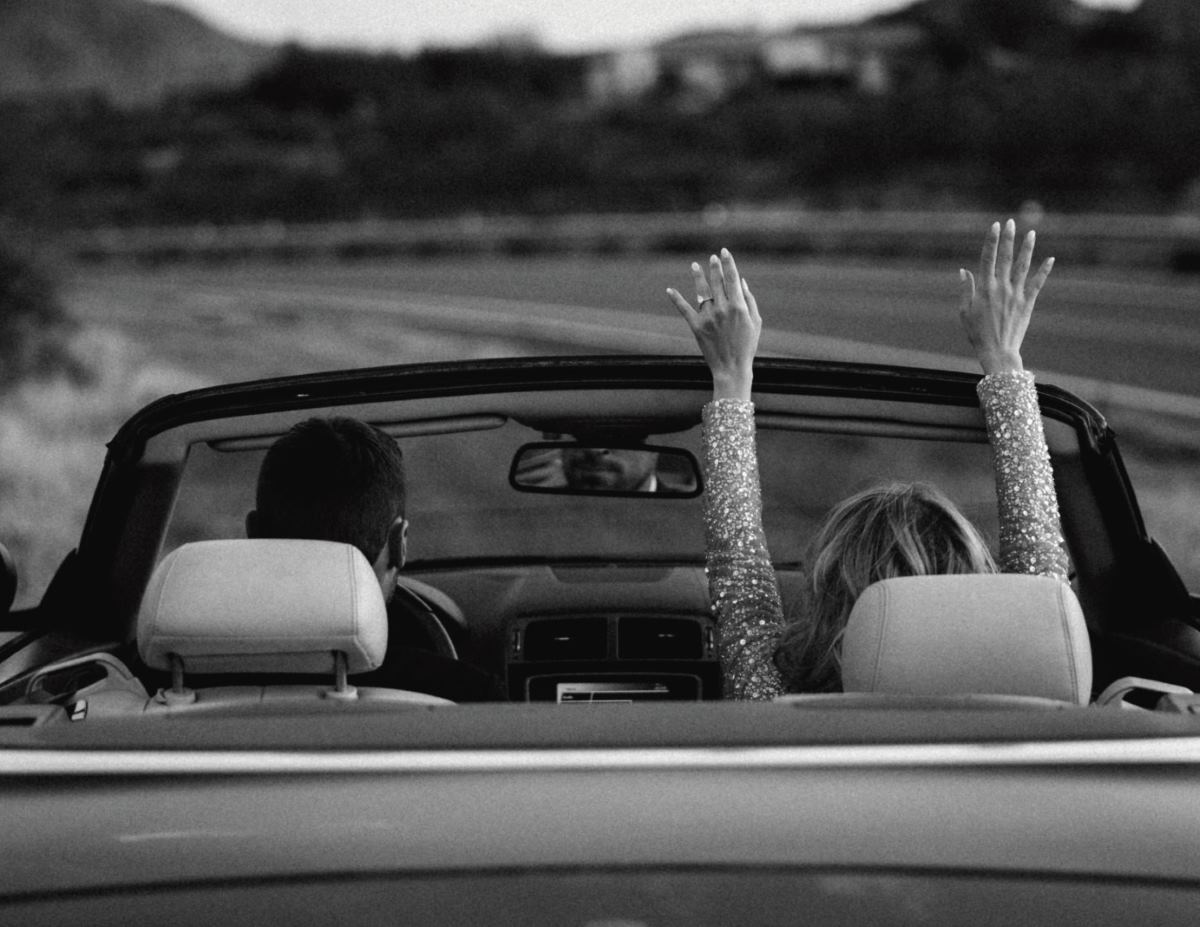
11. HAVING A WEDDING CAKE
In ancient Rome, guests would break a loaf of bread over the bride's head to symbolize fertility, and the newlyweds would share a few bites while guests scooped up the crumbs for good luck. In medieval England, the bride and groom had to try to kiss over a pile of stacked spiced buns, scones, and cookies—a precursor to the tiered wedding cakes of today—supposedly ensuring a prosperous future if they were able to successfully smooch without toppling the whole thing over. Browse our list of 27 wedding cake ideas to see how far the wedding cake has come since then.
12. SAVING THE TOP TIER OF THE WEDDING CAKE
Traditionally, the top tier of the wedding cake was frozen to be enjoyed by the wedding couple at their future child's christening. Back in the 19th century, many people assumed the couple would have a baby within a year, so by preserving the wedding cake, they wouldn't have to buy another dessert to celebrate the pregnancy or birth. Nowadays, some couples opt to return on their one-year anniversary to the bakery that made their wedding cake to order a smaller cake with the same flavors. But many couples stick to the cake-saving tradition, in spite of its outdated origins.
13. GIVING OUT CANDY WEDDING FAVORS
In the 16th century, the European aristocracy would give wedding guests a bomboniere—a small trinket box made of crystal, porcelain, and precious stones that was filled with candy or sugar cubes—as a show of wealth (sugar was an expensive delicacy at the time). As sugar became more affordable, bombonieres were succeeded by sugar-coated almonds. The now-traditional wedding favor of five Jordan almonds symbolizes five wishes for the newlyweds: health, wealth, happiness, fertility, and longevity.
14. TOSSING THE BOUQUET
Hundreds of years ago, it was thought to be good luck to touch the bride—and even rip off a piece of her wedding dress. To avoid having her dress torn to shreds, brides would toss their bouquet into the crowd to distract people while she made a break for her bridal chamber. Nowadays, many brides opt to save their bridal bouquet, drying or pressing it.
15. WEARING A WHITE WEDDING DRESS
When Queen Victoria married Prince Albert in 1840, she wore a dress that was white—a hue that quickly became the style standard for non-royal women. A few years later, a popular women’s magazine declared white to be an emblem of purity, further boosting its popularity as the gown color of choice.
Frequently Asked Questions about Wedding Traditions
1. Why do brides traditionally carry a bouquet?
Historically, brides in ancient Greece and Rome carried bouquets with aromatic herbs to ward off evil spirits. Nowadays, brides choose flowers to symbolize beauty and personal style.
2. What does the phrase 'Something old, something new, something borrowed, something blue' mean?
This old rhyme suggests that these items bring good luck. Each represents a piece of the bride's past, future, borrowed happiness, and fidelity.
3. What is the origin of wearing matching bridesmaid dresses?
In Roman times, matching dresses were meant to confuse evil spirits that might target the bride.
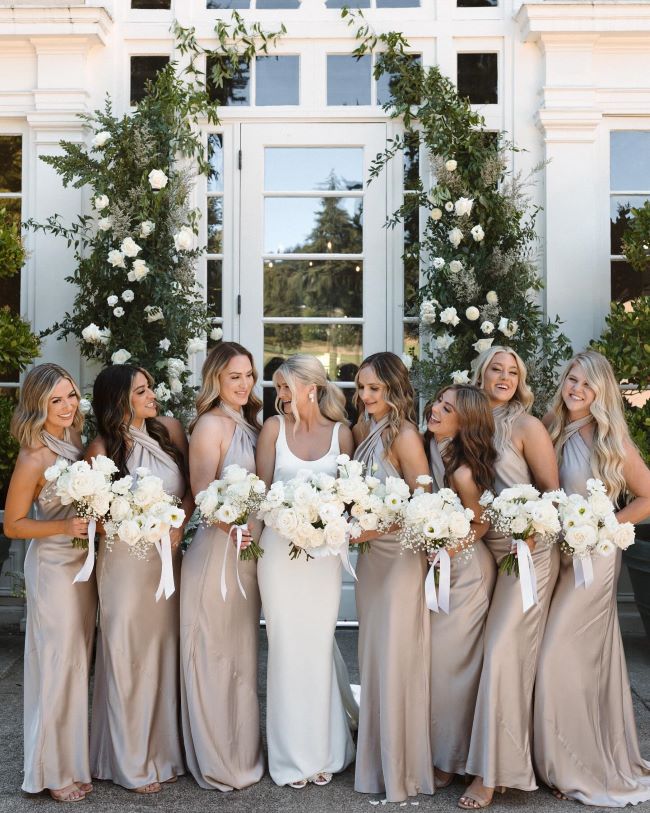
Photo by: Kayla Sprint
4. Why do brides wear veils?
Brides wear veils stemming from an ancient Roman custom to confuse evil spirits. Today, veils are a stylish choice and can come in various lengths and styles.
5. Why is the fourth finger on the left hand known as the 'ring finger'?
The Romans believed it contained the "vein of love" that is directly connected to the heart, making it the ideal place for a wedding ring.
6. What is the significance of mailing printed wedding invitations?
Following the invention of metal-plate engraving in 1642, printed invitations became a more refined way to share wedding details, evolving from town criers and newspaper announcements.
7. Why is the bride 'given away' during the ceremony?
This tradition originated from days of arranged marriages and has shifted to symbolize the parents' support and blessing of the union.
8. What does 'tying the knot' refer to?
It refers to the handfasting ritual in many cultures, where the couple's hands are tied to show their commitment and unity.
9. Why do wedding cakes have tiers?
The tradition began in medieval England, where couples tried to kiss over stacked buns or cakes, which later evolved into tiered wedding cakes signifying prosperity.
10. Why do brides toss their bouquets at the wedding?
This tradition started as a distraction for guests so the bride could escape without having her dress torn, as it was thought to be good luck to touch the bride or rip off a piece of her wedding dress. Now it’s for fun and to pass on good luck.




